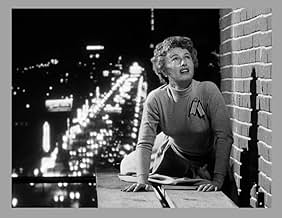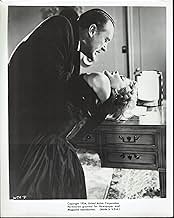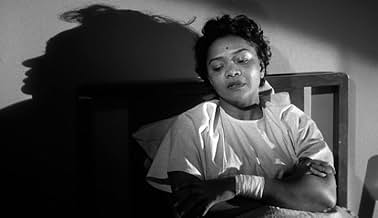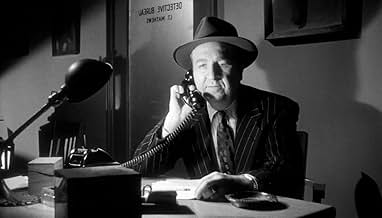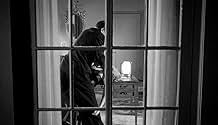NOTE IMDb
6,6/10
3,7 k
MA NOTE
Ajouter une intrigue dans votre langueA woman's sanity comes into question after she claims to have witnessed a murder from her apartment window.A woman's sanity comes into question after she claims to have witnessed a murder from her apartment window.A woman's sanity comes into question after she claims to have witnessed a murder from her apartment window.
- Réalisation
- Scénario
- Casting principal
Adeline De Walt Reynolds
- The Old Lady
- (as Adeline de Walt Reynolds)
Claude Akins
- Police Officer
- (non crédité)
Ralph Brooks
- Man at Lunch Counter
- (non crédité)
Russell Custer
- Police Officer
- (non crédité)
Sam Edwards
- Tommy
- (non crédité)
Jean Fenwick
- Nurse
- (non crédité)
Fred Graham
- Plainclothes Man
- (non crédité)
Avis à la une
This is the kind of cat and mouse thriller that we will never make again. It is a movie that went through a process. Someone had an idea, wrote the story, set the atmosphere, and produced a white knuckled mystery. Boy, do I miss film noir.
Barbara Stanwyck plays an intelligent professional woman who sees a woman murdered in the apartment across from her. She calls the police who come to the conclusion she was dreaming. Gary Merrill plays the weary, but sympathetic, detective who investigates. They question the suspect - George Sanders - but he eventually convinces them that she is unbalanced. She becomes more and more desperate for someone to believe her all the while she is being set up. She and Gary Merrill begin to fall in love. He wants to believe her, but George has spun an insidious web. Eventually she finds herself under suspicion and is sent to the cuckoo's nest for observation. There is bizarre confrontation between Barbara and George where he actually admits the murder and proclaims himself the savior of the 4th Reich! You'll have to take it from there.
Barbara Stanwyck was a little past her prime, but she still put out the passion and energy that made her famous. George Sanders really looked tired, but displayed that old world charm that makes little old ladies melt. Gary Merrill is such a likable guy, you tend to forget that he can't act.
There was not one car chase, not one explosion, and no one fired a pistol, never mind a Mach 10. Boy I miss these movies.
Barbara Stanwyck plays an intelligent professional woman who sees a woman murdered in the apartment across from her. She calls the police who come to the conclusion she was dreaming. Gary Merrill plays the weary, but sympathetic, detective who investigates. They question the suspect - George Sanders - but he eventually convinces them that she is unbalanced. She becomes more and more desperate for someone to believe her all the while she is being set up. She and Gary Merrill begin to fall in love. He wants to believe her, but George has spun an insidious web. Eventually she finds herself under suspicion and is sent to the cuckoo's nest for observation. There is bizarre confrontation between Barbara and George where he actually admits the murder and proclaims himself the savior of the 4th Reich! You'll have to take it from there.
Barbara Stanwyck was a little past her prime, but she still put out the passion and energy that made her famous. George Sanders really looked tired, but displayed that old world charm that makes little old ladies melt. Gary Merrill is such a likable guy, you tend to forget that he can't act.
There was not one car chase, not one explosion, and no one fired a pistol, never mind a Mach 10. Boy I miss these movies.
Perhaps Barbara Stanwyck was looking to score another Oscar with Witness To
Murder. Her fourth and final nomination was with Sorry Wrong Number. In
that film she overhears a murder plot.
In this one she sees neighbor George Sanders commit a strangulation on some woman. But the police show up and no body and no signs of struggle. Still Stanwyck persists and detectives Gary Merrill and Jesse White do their best..
We learn too early that Sanders did the deed which robs us of suspense. Still Sanders is at his caddiest and that's always a treat.
The best scenes are Stanwyck in a mental ward and she's in with a lot of those you would have seen in the Snake Pit. Wonderful scene allowing all the players including Stanwyck to overact and stay in character.
Timing is everything and Witness To Murder was released first so it was no copycat. But Alfred Hitchcock's Rear Window with the same premise and all those Hitch touches came out far superior and this film was forgotten.
Stanwyck and the cast do a good job though and Witness To Murder should not be forgotten.
In this one she sees neighbor George Sanders commit a strangulation on some woman. But the police show up and no body and no signs of struggle. Still Stanwyck persists and detectives Gary Merrill and Jesse White do their best..
We learn too early that Sanders did the deed which robs us of suspense. Still Sanders is at his caddiest and that's always a treat.
The best scenes are Stanwyck in a mental ward and she's in with a lot of those you would have seen in the Snake Pit. Wonderful scene allowing all the players including Stanwyck to overact and stay in character.
Timing is everything and Witness To Murder was released first so it was no copycat. But Alfred Hitchcock's Rear Window with the same premise and all those Hitch touches came out far superior and this film was forgotten.
Stanwyck and the cast do a good job though and Witness To Murder should not be forgotten.
The John Alton photography is layered thick and shadowy in this late Film-Noir entry. Almost every scene is back lit with diagonals and impressions draping the proceedings and it is this atmospheric artistic display that highlights this often filmed story.
The characters and conventions of the Noir cycle by this time have become familiar but the shear broad strokes of the style are undeniably effective. The odd take on the villain being of Nazi descent with delusions of grandeur while meant to be of a deep personality flaw, is obtrusive and distracts from believability. It is an unwanted and unneeded take on the psychological persona of the killer.
The mental hospital scene is a standout as is the finale through the construction site. The only drag is the relentless unbelieving of the authorities that wears out its welcome fast but in the long view does not hold the film back from its better parts.
The characters and conventions of the Noir cycle by this time have become familiar but the shear broad strokes of the style are undeniably effective. The odd take on the villain being of Nazi descent with delusions of grandeur while meant to be of a deep personality flaw, is obtrusive and distracts from believability. It is an unwanted and unneeded take on the psychological persona of the killer.
The mental hospital scene is a standout as is the finale through the construction site. The only drag is the relentless unbelieving of the authorities that wears out its welcome fast but in the long view does not hold the film back from its better parts.
Barbara Stanwyck witnesses a murder and the culprit, played by the usually sinister George Sanders, is trying to drive her insane after this event. Gary Merrill is the detective who tries to sort this all out while he is falling for Cheryl (Barbara).
The flaw here is in the writing. Sanders, as Mr. Richter, should have immediately been under much more suspicion as he was a former Nazi who came into this country legally. Who can believe that one? In addition, he is an author whose books justify the deaths of certain people. Sounds horribly familiar to me.
Stanwyck gives her usually good performance as a tormented woman who is driven mad by Richter.
The roof scene finale is exciting but comes too late following big errors in the movie writing.
The flaw here is in the writing. Sanders, as Mr. Richter, should have immediately been under much more suspicion as he was a former Nazi who came into this country legally. Who can believe that one? In addition, he is an author whose books justify the deaths of certain people. Sounds horribly familiar to me.
Stanwyck gives her usually good performance as a tormented woman who is driven mad by Richter.
The roof scene finale is exciting but comes too late following big errors in the movie writing.
It's interesting that both this film and "Rear Window" came out in the same year, since the base plot is identical: person witnessess murder through apartment window in opposing apartment and spends rest of movie trying to convince everone else what they saw. While the Hitchcock movie is more stylish and elaborate, this film definitely keeps your attention. Typical of movies of the 50's, the villain is disposed of in the climax, thereby eliminating any necessity of bringing them to justice. Stanwyck, as usual, gives her best "woman in distress", hysterical performance.
Le saviez-vous
- AnecdotesIn an unusual connection for the time (or possibly a product placement), the W&J Sloane Company in Beverly Hills - where Cheryl worked - was a real furniture and interior decorating firm founded in New York City in 1843. It went bankrupt in 1985. According to the end credits, the company supplied set decorations and furnishings for the film.
- GaffesThe story is taking place in Los Angeles, but the map on the wall in Larry's office is that of San Francisco.
- Citations
[repeated line]
The Old Lady - Mental Patient: Show Mr. Peabody into the library please.
- ConnexionsFeatured in Frances Farmer Presents: Witness to Murder (1959)
Meilleurs choix
Connectez-vous pour évaluer et suivre la liste de favoris afin de recevoir des recommandations personnalisées
Détails
- Date de sortie
- Pays d’origine
- Langues
- Aussi connu sous le nom de
- Testigo del crimen
- Lieux de tournage
- Linda Vista Apartments, 939 S. Serrano Ave., Los Angeles, Californie, États-Unis(Cheryl Draper's apartment building)
- Société de production
- Voir plus de crédits d'entreprise sur IMDbPro
- Durée
- 1h 23min(83 min)
- Couleur
- Rapport de forme
- 1.75 : 1
Contribuer à cette page
Suggérer une modification ou ajouter du contenu manquant

![Regarder Trailer [EN]](https://m.media-amazon.com/images/M/MV5BYjI4NDBiYmQtN2U0MS00MTdjLWI0YzEtODBkYjE0YjQ1MDc4XkEyXkFqcGdeQXRyYW5zY29kZS13b3JrZmxvdw@@._V1_QL75_UX500_CR0)
